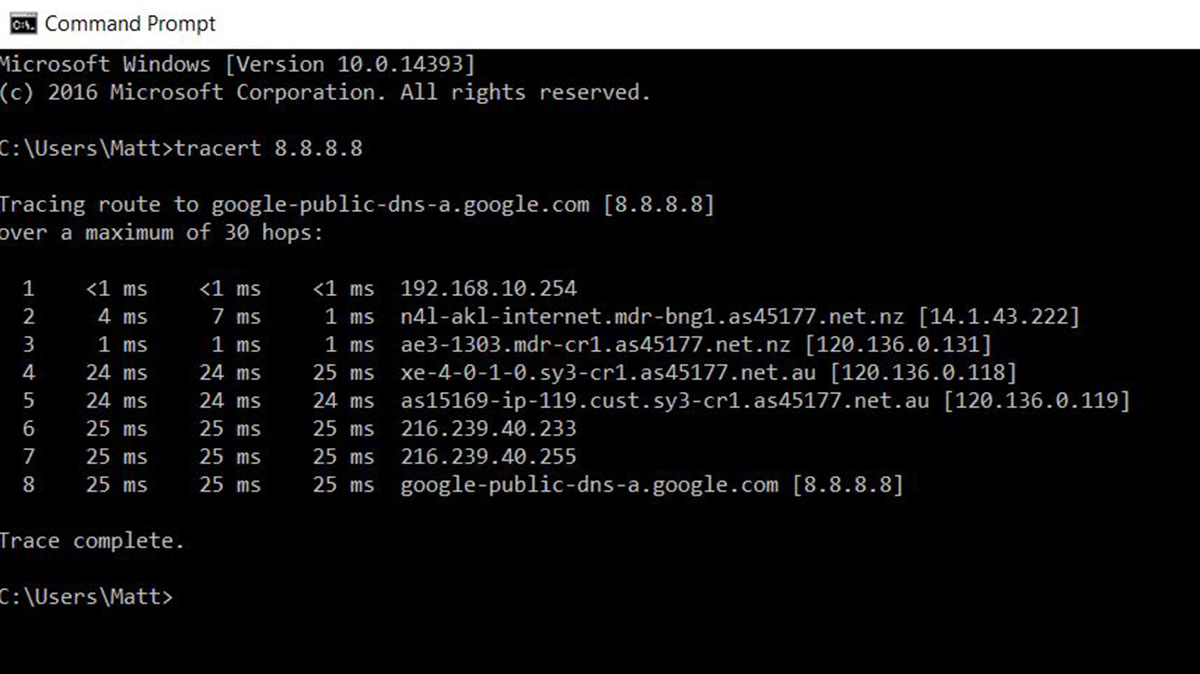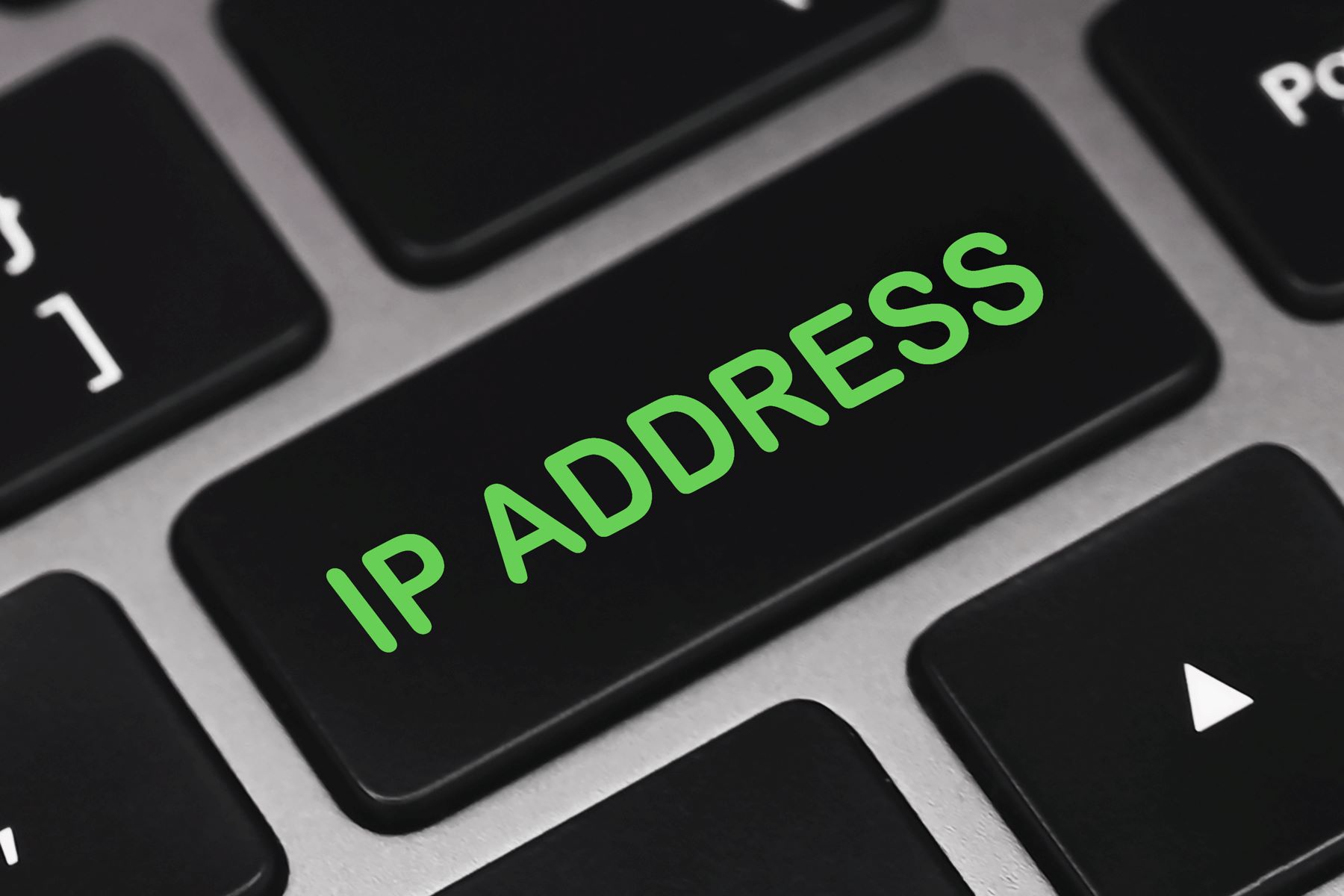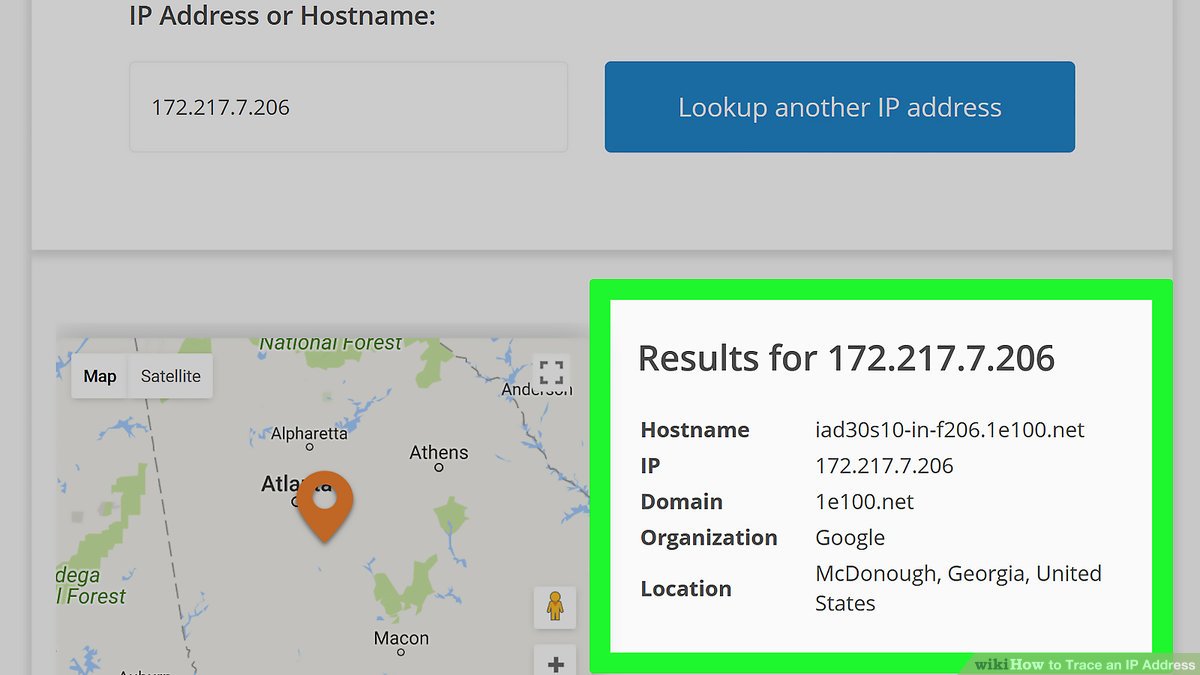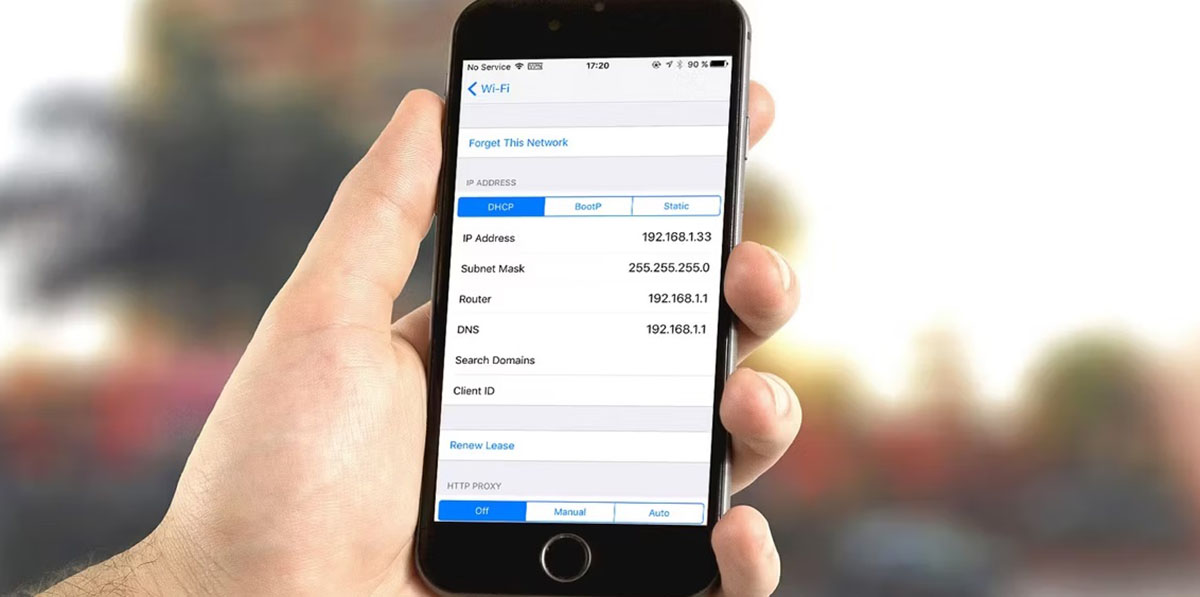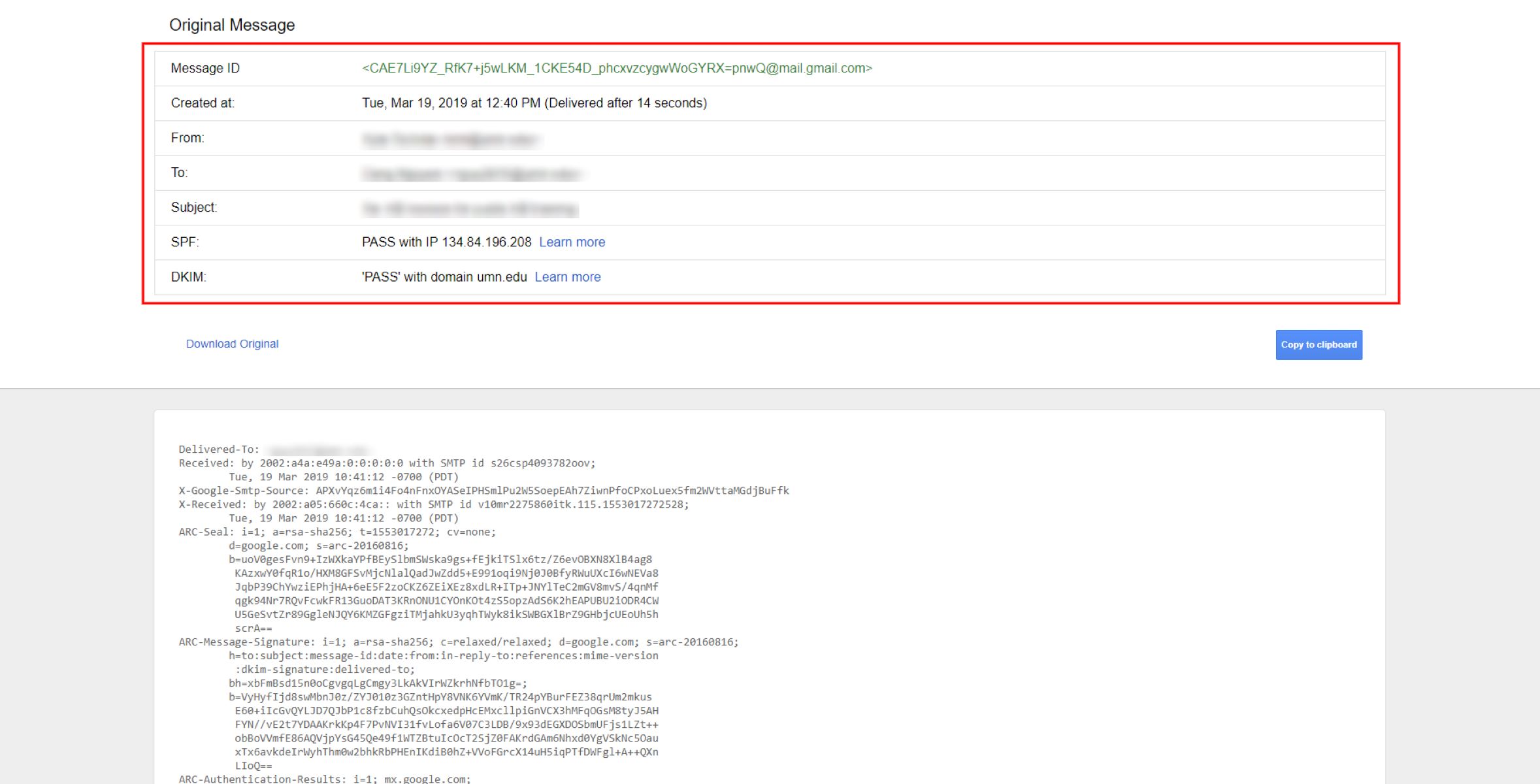Introduction
An IP address, or Internet Protocol address, is a unique numerical label assigned to each device connected to a computer network that uses the Internet Protocol for communication. It serves as a digital identification for devices such as computers, smartphones, tablets, and servers, allowing them to send and receive data over the internet.
Tracing an IP address involves the process of determining the physical location and other details of the device associated with that IP address. This can be useful for various reasons, including cybersecurity investigations, monitoring online activities, detecting online fraud, and even locating lost or stolen devices.
Understanding how IP tracing works is essential to grasp the steps involved in tracing an IP address. Additionally, it is crucial to be aware of the legal considerations and the different methods available for tracing an IP address.
This article will provide an overview of IP tracing and guide you through the various steps and tools involved in the process. Whether you are an individual who wants to track down the source of online harassment or a business owner looking to investigate suspicious activities, this article will serve as a valuable resource.
Remember, tracing an IP address should always be done in accordance with the law and for legitimate reasons. Let’s delve into the fascinating world of IP tracing and discover how to trace an IP address effectively and responsibly.
What is an IP Address?
An IP address, short for Internet Protocol address, is a unique identifier assigned to each device connected to a computer network. It serves as a digital address that allows devices to communicate with each other over the internet.
IP addresses consist of a series of numeric values separated by periods. There are two main types of IP addresses: IPv4 (Internet Protocol version 4) and IPv6 (Internet Protocol version 6). IPv4 addresses are made up of four sets of numbers, while IPv6 addresses consist of eight sets of numbers and letters. An example of an IPv4 address is 192.168.0.1, while an example of an IPv6 address is 2001:0db8:85a3:0000:0000:8a2e:0370:7334.
Every device that connects to the internet, whether it’s a computer, smartphone, or smart home device, is assigned a unique IP address. This address serves as a digital identifier, allowing devices to send and receive data packets to and from other devices on the same network or across different networks.
When you visit a website, for example, your device’s IP address is used to establish a connection with the website’s server. The server then sends the requested data back to your device using its IP address as the return address.
IP addresses can be dynamic or static. Dynamic IP addresses are assigned by an internet service provider (ISP) and can change over time. This is commonly used for residential internet connections. On the other hand, static IP addresses remain constant and are often used for servers and other devices that need a fixed, known address.
Understanding IP addresses is essential for various internet-related tasks, including network troubleshooting, security audits, and online tracking. With the ability to trace an IP address, you can gather valuable information about the device’s location, internet service provider, and possibly even the individual or organization associated with it.
Now that we have a basic understanding of what an IP address is, let’s explore the reasons why you might want to trace an IP address and the methods used to accomplish this.
Why Would You Want to Trace an IP Address?
There are several legitimate reasons why you might want to trace an IP address. Whether you’re an individual concerned about your online security or a business owner looking to investigate potential threats, IP tracing can provide valuable insights. Here are some common scenarios where tracing an IP address can be beneficial:
- Cybersecurity investigations: Tracing an IP address is often used in cybersecurity investigations to identify potential threats, such as unauthorized access attempts or malicious activities. By tracing the IP address associated with suspicious activities, you can gather information about the source and take appropriate action to protect your digital assets.
- Online harassment or stalking: If you’re experiencing online harassment or stalking, tracing the IP address can help in identifying the person behind the malicious behavior. This information can be crucial when filing a report with law enforcement or taking legal action.
- Website analytics: Website owners often track IP addresses to gain insights into their visitors’ demographics, locations, and browsing behaviors. By analyzing this data, they can tailor their content and marketing strategies to better meet their audience’s needs.
- Preventing fraud: Tracing an IP address can be useful in detecting fraudulent activities, such as identity theft, financial scams, or online shopping scams. By identifying the IP address associated with the suspicious transaction, you can take swift action to mitigate the risk and protect yourself or your business.
- Geolocation and localized marketing: Tracing IP addresses allows businesses to determine the geographic location of their website visitors. This information can be used to deliver targeted advertisements and personalized content based on the visitor’s location.
- Legal and law enforcement investigations: Tracing IP addresses plays a crucial role in legal and law enforcement investigations. It can provide evidence and help track down individuals involved in criminal activities, online harassment, intellectual property theft, or cyberattacks.
It’s important to note that tracing an IP address should always be done legally and ethically. It is necessary to respect privacy laws and use the information obtained responsibly. In some cases, you may need to involve law enforcement or seek professional help to ensure the tracing process is performed correctly and within the boundaries of the law.
Now that we understand the various reasons why tracing an IP address can be beneficial, let’s dive into the techniques and tools used to accomplish this task.
How Does IP Tracing Work?
IP tracing involves the process of determining the physical location and other details associated with an IP address. While it may seem complex, the basic concept behind IP tracing is relatively straightforward.
When a device connects to the internet, it sends and receives data packets through various network routers. These routers act as intermediaries, forwarding the data packets to their destination. Each time a packet passes through a router, the router adds a timestamp and its own IP address to the packet’s header.
By utilizing the routing information and the timestamps recorded in the packet’s journey, tracing an IP address becomes possible. There are several methods and technologies used to perform IP tracing:
- Reverse DNS lookup: One of the common methods used in IP tracing is the reverse Domain Name System (DNS) lookup. DNS translates IP addresses into human-readable domain names. By performing a reverse DNS lookup, you can retrieve the domain name associated with an IP address. While this method may not provide precise location information, it can offer insights into the organization or service provider associated with the IP address.
- Geolocation databases: Geolocation databases provide information about the geographic location associated with an IP address. These databases are created by aggregating and analyzing data from various sources, including internet service providers, data centers, and user-contributed data. Geolocation data can include the city, region, country, and even approximate latitude and longitude coordinates. However, it’s important to note that the accuracy of geolocation data can vary depending on the source and the IP address in question.
- Internet Service Provider (ISP) cooperation: In some cases, law enforcement agencies or individuals with legal authority may collaborate with internet service providers to trace an IP address. ISPs can provide more detailed information about the subscriber associated with a specific IP address, including their name, address, and contact details. This method is typically used in serious criminal investigations or with proper legal authorization.
- Packet sniffing and network monitoring: Advanced network monitoring tools can intercept and analyze network traffic to trace IP addresses. These tools capture packets sent between devices on a network, allowing for detailed analysis of the packet’s source and destination IP addresses. Packet sniffing can offer more precise and real-time information about IP addresses, but it requires technical expertise and access to the network infrastructure.
It’s important to note that while IP tracing can provide valuable information about the location and other details associated with an IP address, it is not always 100% accurate. Factors such as the use of virtual private networks (VPNs), proxy servers, and dynamic IP addresses can affect the precision of the tracing results.
Understanding the methods and technologies used in IP tracing is essential when it comes to selecting the right tools and approaches for your specific needs. In the next sections, we will explore the step-by-step process of tracing an IP address and the different tools available for this purpose.
Legal Considerations When Tracing an IP Address
Tracing an IP address can provide valuable information, but it’s important to be aware of the legal considerations involved. When engaging in IP tracing, it’s crucial to respect privacy laws and ensure that you are acting within the boundaries of the law. Here are some key legal considerations to keep in mind:
- Privacy laws: Different countries have different privacy laws, and it’s essential to familiarize yourself with the laws applicable in your jurisdiction. Ensure that your activities comply with relevant privacy legislation, including obtaining consent if required.
- Lawful purposes: Tracing an IP address should only be done for lawful purposes. Pursuing malicious or illegal activities, such as hacking, stalking, or unauthorized access, is strictly prohibited and may result in severe legal consequences.
- Obtaining proper authorization: Depending on your intentions and the scope of the investigation, it may be necessary to obtain proper authorization. In some cases, you may need to involve law enforcement agencies, legal professionals, or obtain a court order to trace an IP address.
- Data protection: When engaging in IP tracing, it’s essential to handle any personal data or sensitive information obtained with utmost care. Ensure that you comply with data protection laws, including properly secure and disposing of any data collected during the tracing process.
- Professional expertise: If you lack the necessary technical expertise or legal knowledge, it’s advisable to consult with professionals such as legal experts, cybersecurity specialists, or law enforcement agencies. They can provide guidance and ensure that your actions are lawful and in compliance with the relevant regulations.
- Responsible use of information: Any information obtained through IP tracing should be used responsibly and ethically. It’s important to respect individuals’ privacy rights and refrain from using the information for malicious purposes or engaging in activities that may cause harm.
Tracing an IP address without proper authorization or engaging in illegal activities can result in severe legal consequences, including civil lawsuits and criminal charges. Always ensure that your actions are lawful and in line with the applicable regulations.
If you have concerns about potential threats or fraudulent activities, it’s recommended to involve law enforcement agencies or seek professional assistance. They have the expertise and legal authority to conduct investigations within the bounds of the law.
By understanding the legal considerations involved in IP tracing, you can protect yourself, respect privacy rights, and ensure that your actions are conducted in a responsible and lawful manner.
How to Trace an IP Address
Tracing an IP address involves several steps and methods. Depending on your specific requirements and technical expertise, you can choose from various approaches to trace an IP address. Here is a step-by-step guide outlining different methods:
Step 1: Collect the IP address
The first step in tracing an IP address is to gather the IP address that you want to trace. This can be obtained from various sources, such as the logs of your website or application, the header information of an email, or through network monitoring tools.
Step 2: Use online IP lookup tools
Online IP lookup tools can provide basic information about an IP address, such as its geolocation, internet service provider (ISP), and organization. Simply enter the IP address into a reliable IP lookup service or website, and it will provide you with the available information.
Step 3: Utilize IP tracking software
If you require more detailed information about the IP address, you can consider using dedicated IP tracking software. These tools can provide additional insights into the IP address, including its history, associated domains, and even network activity. Examples of popular IP tracking software include SolarWinds IP Address Tracker, Paessler IP Address Manager, and Advanced IP Scanner.
Step 4: Consult with law enforcement
In situations where you suspect illegal activities or require more advanced investigative techniques, consulting with law enforcement agencies can be beneficial. They have the legal authority and expertise to conduct thorough investigations and trace IP addresses using specialized tools and techniques.
Step 5: Hire a professional investigator
If the tracing requirements are complex or beyond your technical capabilities, you may consider hiring a professional investigator or cybersecurity firm that specializes in IP tracing. They can use advanced techniques and tools to gather detailed information about the IP address, investigate further, and provide you with comprehensive reports.
Remember, it’s crucial to exercise caution and act within the boundaries of the law when tracing an IP address. Always ensure that your actions are legal and respect privacy rights.
Lastly, while tracing an IP address can provide valuable information, it’s essential to interpret the results cautiously. IP addresses can be dynamic, and individuals may use techniques like VPNs or proxy servers to obfuscate their true location. Therefore, the information obtained through IP tracing should be considered as an initial lead rather than conclusive evidence.
By following these steps and using the appropriate tools and resources, you can effectively trace an IP address and gather valuable information for your specific purposes.
Step 1: Collect the IP Address
The first step in tracing an IP address is to collect the IP address that you want to trace. The IP address can be obtained from various sources, depending on your specific needs and circumstances. Here are some common methods of collecting the IP address:
Website and server logs:
If you are a website owner or system administrator, you can access the logs of your website or server to find the IP address of visitors or individuals who have interacted with your system. These logs typically record details such as the date, time, IP address, and accessed pages or services. By examining the logs, you can identify the IP address associated with a specific event or activity.
Email headers:
If you are investigating a suspicious email or need to trace the origin of a message, you can examine the email headers to find the IP address of the sender. Email headers contain information about the email’s routing path, including the IP address of the mail servers it passed through. Most email clients and services offer options to view the full headers of an email, revealing the IP address details.
Network monitoring tools:
If you have access to network monitoring tools or packet sniffers, you can capture network traffic to extract the IP address of devices communicating on the network. These tools intercept and analyze data packets, allowing you to identify the source and destination IP addresses involved in the communication. Network monitoring tools are commonly used in cybersecurity and network administration to troubleshoot and analyze network activity.
Third-party communication:
In some cases, you may receive information or communication from individuals that include their IP address. This can be through direct communication, online forums, chat platforms, or social media. By collecting the IP address directly from the person or platform, you can use it to track their location and other relevant details.
Remember, when collecting an IP address, it’s crucial to ensure that you have legitimate reasons and are adhering to privacy laws. It’s essential to respect individuals’ privacy rights and only collect and use IP addresses for lawful purposes.
Once you have collected the IP address, you can proceed to the next steps to trace it using various tools and techniques. The IP address serves as the starting point for the tracing process, allowing you to gather more information about the device or individual associated with it.
Now that we have obtained the IP address, let’s move on to the next step, where we will explore different online IP lookup tools that can provide valuable insights into the IP address.
Step 2: Use Online IP Lookup Tools
Once you have collected the IP address, the next step in tracing an IP address is to utilize online IP lookup tools. These tools provide valuable information about the IP address, helping you gather insights into its geographical location, internet service provider (ISP), and organization. Here’s how you can use online IP lookup tools:
Choose a reliable IP lookup service or website:
Start by selecting a trusted and reputable IP lookup service or website. There are numerous online platforms available that offer IP lookup services. Some popular options include WhatIsMyIPAddress, IP-Tracker.org, and IP2Location.
Enter the IP address:
Once you have chosen an IP lookup tool, enter the collected IP address into the provided search box or field. Click on the search or lookup button to initiate the search process.
Review the results:
The IP lookup tool will generate results based on the provided IP address. These results typically include information such as the IP address’s geographic location, including the city, region, and country. Additionally, the tool may provide details about the ISP associated with the IP address and sometimes even the organization or company using the IP address.
Interpreting the results:
When reviewing the results, it’s important to interpret them cautiously. Keep in mind that IP geolocation can sometimes be imprecise due to factors such as the use of virtual private networks (VPNs), satellite internet services, or when an IP address is behind a proxy server. Additionally, some IP lookup tools may provide more accurate data than others, so consider cross-referencing the results if necessary.
Online IP lookup tools offer an accessible and convenient way to gather basic information about the IP address you are tracing. They allow you to gain insights into the general location and ISP associated with the IP address, which can be valuable for initial investigations.
However, it’s essential to remember that online IP lookup tools may not provide precise or detailed information in all cases. If you require more in-depth details or want to explore further, you may need to consider other methods, such as consulting with law enforcement or utilizing dedicated IP tracking software.
Now that you have used online IP lookup tools to gather basic information, we can move on to the next step, where we will explore the use of IP tracking software for more detailed IP tracing.
Step 3: Utilize IP Tracking Software
In the quest to trace an IP address more comprehensively, utilizing IP tracking software can provide additional insights and detailed information. IP tracking software offers advanced features and capabilities that go beyond what online IP lookup tools can provide. Here’s how you can utilize IP tracking software:
Select an IP tracking software:
Start by selecting a reliable and feature-rich IP tracking software. There are various options available, both free and paid, each offering different functionalities. Some popular IP tracking software includes SolarWinds IP Address Tracker, Paessler IP Address Manager, and Advanced IP Scanner. Research and choose the software that best fits your requirements.
Install and set up the software:
After selecting the software, follow the installation instructions provided by the vendor. Ensure that the software is compatible with your operating system and network infrastructure. Once installed, configure the software as per your needs, such as specifying the IP range or target IP addresses for tracking.
Perform IP tracking:
With the software now set up, you can initiate the IP tracking process. Use the software’s interface to enter the IP address you want to trace or specify the IP range you want to scan. The software will then start scanning the network or querying databases to retrieve information related to the IP address.
Gain detailed insights:
IP tracking software provides more comprehensive insights into the IP address you are tracing. The software can offer details such as historical information, associated domains, network activity, and even additional devices connected to the IP address. This deeper level of information can help in investigations, network management, or monitoring potential threats.
Interpret the results:
Once the IP tracking software completes the scan or query, it will present you with results and reports. Take the time to analyze and interpret the information provided carefully. Cross-reference with other sources if necessary to validate the accuracy of the data. Remember that IP tracing is not always 100% accurate, especially when dealing with methods employed to hide or mask IP addresses.
Utilizing IP tracking software allows you to delve deeper into the IP address you are tracing, providing more extensive insights and a better understanding of its network environment. However, keep in mind that advanced IP tracking software may require technical expertise and access to network infrastructure.
If the IP tracking software does not yield satisfactory results or you need to escalate the investigation further, you may consider consulting with law enforcement agencies or hiring professional investigators who specialize in IP tracing.
Now that you have utilized IP tracking software to gather more detailed information, we can proceed to the next step, which involves seeking the assistance of law enforcement if necessary.
Step 4: Consult with Law Enforcement
If you have exhausted the previous steps or have encountered a situation that warrants further investigation, it may be necessary to consult with law enforcement agencies. Law enforcement professionals have the expertise and resources to conduct in-depth investigations and trace IP addresses legally. Here’s how you can consult with law enforcement:
Gather relevant information:
Before contacting law enforcement, compile all the relevant information you have gathered during the IP tracing process. This includes the IP address, timestamps, any related messages or incidents, and any other supporting documentation or evidence you have collected. Having this information readily available will help law enforcement assess the situation more effectively.
Research the appropriate law enforcement agency:
Determine the law enforcement agency that has jurisdiction over the case. Depending on the nature of the incident and your location, this could be local police, a cybercrime division, or a specialized agency. Conduct some research to identify the appropriate agency and gather their contact details.
Contact the law enforcement agency:
Reach out to the law enforcement agency through their designated channels, such as their non-emergency hotline or online reporting portal. Provide them with a clear and concise summary of the situation, including the IP address and relevant details. Follow their instructions and provide any additional information they may request.
Cooperate with law enforcement:
Be prepared to provide any necessary assistance or further information that law enforcement may require. Cooperate fully with their investigation, follow their instructions, and provide any additional evidence or documentation they may need to proceed with the case. Respect any confidentiality or legal restrictions they may impose.
Seek legal advice if necessary:
If the situation involves complex legal matters or you have concerns about your role in the process, consult with a legal professional. They can provide guidance on legal matters, help protect your rights, and advise you on any legal implications or obligations.
By involving law enforcement, you are leveraging their knowledge and authority to conduct an official investigation. They have access to additional resources, such as specialized tools and databases, which can aid in tracing IP addresses and gathering evidence legally.
Keep in mind that involving law enforcement may not always be necessary or appropriate for every situation. Use your judgment and discretion to determine when it is necessary to seek their assistance.
With law enforcement involved, the investigation can progress with the appropriate legal framework, increasing the chances of a thorough and successful outcome. However, note that law enforcement agencies have varying priorities and resources, so outcomes and timelines may vary.
Now that you have consulted with law enforcement, we will explore the final step, which involves seeking the help of professional investigators if needed.
Step 5: Hire a Professional Investigator
If you have reached a point where the previous steps have been insufficient or you require a higher level of expertise and resources, it may be time to consider hiring a professional investigator. Professional investigators specialize in conducting thorough investigations, including the tracing of IP addresses. Here’s how you can hire a professional investigator for IP tracing:
Research and select a reputable investigator:
Start by conducting research to find reputable investigators or investigative firms that specialize in IP tracing or digital forensics. Look for investigators with experience, expertise, and a solid reputation in conducting complex investigations. Consider reviewing client testimonials, checking official credentials, and seeking recommendations from trusted sources.
Evaluate the investigator’s expertise:
Assess the investigator’s expertise in IP tracing and their knowledge of relevant laws and regulations. Ensure they have experience in handling cases similar to yours and comfortable working within legal boundaries. Schedule consultations or interviews with potential investigators to discuss your case, ask questions, and understand their approach.
Discuss the scope and objectives of the investigation:
Clearly communicate your objectives, expectations, and the specific details of the IP tracing you require. Provide the investigator with all the relevant information, including the IP address, any related incidents, and any evidence or documentation you have gathered so far. The investigator will use this information to formulate an investigation plan tailored to your needs.
Agree on terms and costs:
Discuss and negotiate the terms of the investigation, including the scope of work, anticipated timelines, and fees. Ensure that all aspects, such as confidentiality, reporting mechanisms, and reimbursements, are clearly defined in a signed agreement or contract to protect both parties’ interests.
Cooperate with the investigator:
Cooperate fully with the investigator throughout the investigation process. Provide any additional information or documentation they may require and respond promptly to their inquiries. Keep in mind that the more cooperation they receive from you, the smoother and more effective the investigation will be.
Stay informed and follow up:
Stay in regular communication with the investigator. Maintain updated knowledge of the progress, any findings, and the steps being taken in the investigation. Seek clarifications if needed and discuss any concerns or questions that arise along the way.
Hiring a professional investigator can provide you with a higher level of expertise and resources, ensuring a more comprehensive and in-depth IP tracing process. Investigators are equipped with specialized tools and techniques to gather evidence, conduct interviews, and analyze data meticulously.
Keep in mind that hiring a professional investigator can be a significant financial commitment. Therefore, it’s important to weigh the potential benefits against the costs involved and assess if it is the right choice for your specific situation.
With the assistance of a professional investigator, you can enhance the chances of success in tracing the IP address and gathering relevant evidence for your case or investigation.
Now that we have covered all the steps involved in tracing an IP address, you are equipped with the knowledge and tools to embark on your own IP tracing journey or seek professional assistance when needed.
Conclusion
Tracing an IP address can provide valuable insights into the geographical location, internet service provider, and organization associated with a device. Whether you are investigating cyber threats, tracking online harassment, or conducting legitimate research, understanding the process and utilizing the right tools is essential.
In this article, we explored the steps involved in tracing an IP address and the various methods you can employ. We discussed the importance of collecting the IP address, using online IP lookup tools for basic information, leveraging IP tracking software for more detailed insights, consulting with law enforcement for legal investigations, and the option of hiring a professional investigator for complex cases.
Throughout the process, it’s crucial to respect privacy laws, handle information responsibly, and ensure that the tracing is carried out for legitimate purposes. Understand the legal considerations involved, seek appropriate authorization when needed, and cooperate with law enforcement agencies or legal professionals as required.
Remember, while IP tracing can provide valuable information, it’s important to interpret the results cautiously. Factors such as the use of VPNs, proxy servers, or dynamic IP addresses can impact the accuracy of the information obtained. Cross-referencing with multiple sources and seeking professional expertise can help ensure a more accurate assessment.
Whether you choose to trace an IP address on your own or seek professional assistance, the ability to trace IP addresses can be a valuable tool for cybersecurity, online investigations, and protecting your digital assets.
Take advantage of the step-by-step approach outlined in this article and utilize the appropriate tools and techniques to trace IP addresses effectively and responsibly. By doing so, you can unravel the digital footprints and gain insights into the devices and individuals connected to specific IP addresses.
Stay vigilant, adhere to legal and ethical guidelines, and use IP tracing as a means to enhance your online security, protect against potential threats, and ensure a safer digital environment.







